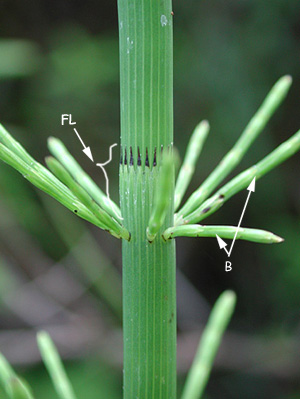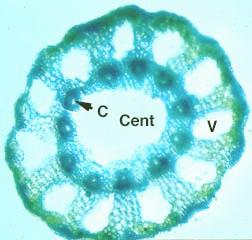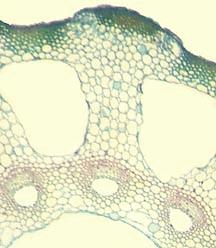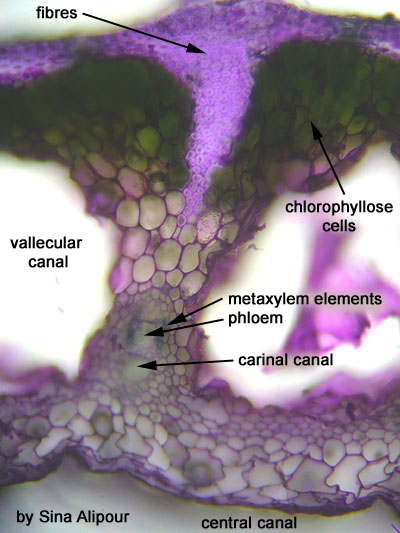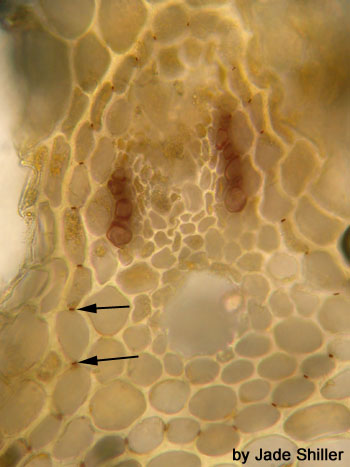Equisetum – stem and leaves
Note the whorled arrangement of branches at the node. They are green and photosynthetic. The leaves are reduced and fused (FL). (See Raven 7th p. 404; 8th, p. 426). The stems are very gritty in texture due to the presence of silica (Si02). Pioneers scrubbed pots with Equisetum, thus the common name of scouring rush. Remember there is an extensive underground system made up of rhizome with adventitious roots.
Equisetum – stem section
The stem has three different types of canals. In lecture we discussed how they develop. The carinal canals form during elongation of the stem by disruption and tearing of the protoxylem. Note the metaxylem elements are formed toward the outside of the protoxylem; this is endarch xylem differentiation. The vallecular canals are formed in the cortical region. The central canal is the pith area. The photo below is a closer look at the stem cross-section. the stele type of the horsetails is difficult to interpret, but most consider it a much dissected siphonostele (tune in to lecture for more details).
Here is a section stained with toluidine blue.
This section was stained with phloroglucinol. You can see the Casparian strips (indicated with arrows) of the endodermis.
Stems and roots of the Sphenophyta show less cell and tissue differentiation than is found in stems and roots of the gymnosperms and angiosperms. Xylem usually contains tracheids, although short vessels are found in a few species; in the inconspicuous phloem, sieve cells are present without companion cells. However, an endodermis and a pericycle are found in the stems of this group, whereas in the angiosperms these tissues are normally restricted to the roots.


